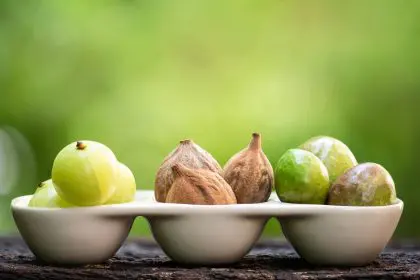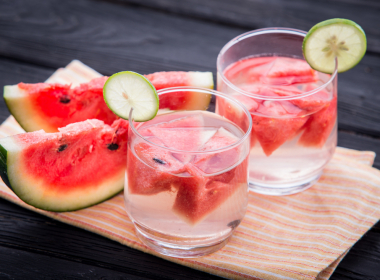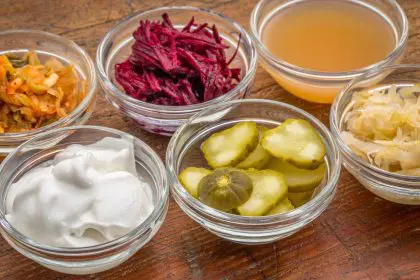Living with a stomach ulcer can transform the simple act of eating into a painful ordeal. These open sores that develop on the lining of the stomach or small intestine can cause burning pain, especially when aggravated by certain foods and beverages. While medication plays a crucial role in treatment, dietary choices significantly impact both comfort and healing.
Understanding stomach ulcers and their dietary connection
Stomach ulcers, also known as peptic ulcers, occur when the protective mucus layer in the digestive tract breaks down, allowing digestive acids to damage the sensitive tissue underneath. This creates painful sores that can bleed, cause intense discomfort, and in severe cases, lead to serious complications.
Diet does not cause ulcers directly, but certain foods and beverages can irritate the stomach lining, increase acid production, or interfere with healing medications. By recognizing and avoiding these irritants, people with ulcers can reduce pain and support the healing process.
Here are 10 items to avoid when managing a stomach ulcer:
1. Alcohol in all forms
Alcohol represents one of the most damaging substances for ulcer patients. It irritates and erodes the mucous lining of the stomach, increases acid production, and interferes with the effectiveness of ulcer medications.
All types of alcoholic beverages can exacerbate ulcer symptoms, including beer, which can stimulate acid secretion; wine, especially red wine with its higher acid content; and spirits and mixed drinks that may contain additional irritants.
For those with stomach ulcers, even moderate alcohol consumption can significantly delay healing and worsen symptoms. Complete avoidance is strongly advisable during the healing phase.
2. Coffee and caffeinated beverages
Caffeinated drinks pose multiple problems for ulcer sufferers. Coffee, even decaffeinated varieties, stimulates acid production in the stomach. The caffeine content in coffee, tea, and energy drinks can further increase stomach acid secretion, irritate the stomach lining, and weaken the lower esophageal sphincter, potentially allowing acid to flow upward.
Many people find that morning coffee triggers immediate ulcer pain. Consider alternatives such as herbal teas (particularly chamomile or licorice), warm water with honey, or grain-based coffee substitutes.
3. Spicy foods and hot peppers
Spicy foods containing hot peppers or chili powder contain capsaicin, a compound that can intensify pain sensation in an already damaged stomach lining. While some studies suggest capsaicin might have beneficial effects in certain digestive conditions, most people with active ulcers report increased pain after consuming hot peppers, hot sauces, curries, and foods with cayenne, paprika, or chili powder.
This category varies significantly by individual tolerance. Some ulcer patients can gradually reintroduce mild spices once healing progresses.
4. Acidic fruits and juices
Certain fruits and their juices contain high levels of acid that can irritate ulcers and trigger pain. The most problematic include citrus fruits like oranges, grapefruits, lemons, and limes; tomatoes and tomato-based products; pineapple, which contains natural digestive enzymes; and fruit juices, especially concentrated or with added vitamin C.
Better alternatives include bananas, apples, pears, and melons, which tend to be less acidic and better tolerated. When consuming fruit juices, diluting them with water can reduce their potential to irritate.
5. Carbonated beverages
Fizzy drinks, including sodas, sparkling water, and carbonated energy drinks, can worsen ulcer symptoms through multiple mechanisms. Carbonation increases pressure and distension in the stomach, many contain phosphoric acid, which may irritate an ulcerated stomach lining, and some contain caffeine, sugars, or artificial sweeteners that further aggravate symptoms.
The bubbles in carbonated beverages can also cause belching, which may bring stomach acid into the esophagus, creating additional discomfort.
6. High-fat and fried foods
Foods high in fat content remain in the stomach longer, requiring more acid for digestion and potentially increasing irritation. Problem foods include deep-fried items, fatty cuts of meat, full-fat dairy products, and processed foods high in trans fats.
These foods not only irritate ulcers directly but can also contribute to obesity, which is associated with increased ulcer risk and slower healing. Opt instead for lean proteins, low-fat dairy options, and foods prepared by baking, steaming, or grilling.
7. Chocolate and cocoa products
Chocolate contains several compounds that can aggravate ulcer symptoms, including caffeine, which stimulates acid production; theobromine, another stimulant; and fat content, especially in milk and dark chocolates.
Additionally, chocolate can relax the lower esophageal sphincter, potentially allowing stomach acid to flow upward. For those with a sweet craving, consider alternatives like carob products, which provide a chocolate-like flavor without the problematic compounds.
8. Certain seasonings and condiments
Beyond obviously spicy additives, several common seasonings can irritate ulcers, including black pepper, which can stimulate acid secretion; garlic and onions, especially in raw form; vinegar-based condiments like ketchup, mustard, and relish; and highly acidic salad dressings.
Gentler alternatives include herbs like basil, oregano, and thyme, which add flavor without increasing irritation. Creating simple dressings with olive oil and mild herbs can replace more problematic condiments.
9. Processed foods with preservatives
Highly processed foods often contain additives that may irritate the digestive tract, such as sodium nitrates and nitrites in processed meats, artificial sweeteners, MSG and other flavor enhancers, and some food colorings and preservatives.
These additives can disrupt the mucus layer protecting the stomach and trigger inflammation in sensitive individuals. Focusing on whole, unprocessed foods creates a gentler environment for healing.
10. Non-steroidal anti-inflammatory drugs (NSAIDs)
While not a food, this common medication category deserves mention because many people consume these drugs regularly without realizing their connection to ulcers. NSAIDs include aspirin, ibuprofen, naproxen, and many over-the-counter pain relievers.
These medications can damage the stomach’s protective lining and even cause ulcers directly. For pain relief, acetaminophen may be a better option, though consulting a healthcare provider about all medications is essential.
Creating an ulcer-friendly eating pattern
Beyond avoiding problematic foods, certain eating habits can support ulcer healing. Eat smaller, more frequent meals rather than large ones that require more acid to digest. Chew food thoroughly to reduce the workload on your digestive system. Stay upright for at least two hours after eating to minimize acid reflux.
Keep a food diary to identify personal triggers, as individual responses vary significantly. Consider adding foods with potential healing properties, such as honey, probiotics, and foods high in flavonoids found in many colorful fruits and vegetables.
When to seek additional help
Dietary adjustments represent just one aspect of comprehensive ulcer management. Medical attention becomes necessary if you experience persistent pain despite dietary changes and medication, vomiting (especially if blood is present), dark tarry stools indicating bleeding, sudden severe abdominal pain that might indicate perforation, or symptoms of anemia like fatigue or weakness.
While most ulcers heal with proper medication and dietary management, regular follow-up with healthcare providers ensures complications are caught early. They can also provide guidance on gradually reintroducing foods as healing progresses.
By identifying and avoiding these common triggers while working with healthcare providers on a comprehensive treatment plan, most people with stomach ulcers can find significant relief and support their body’s natural healing processes.

















